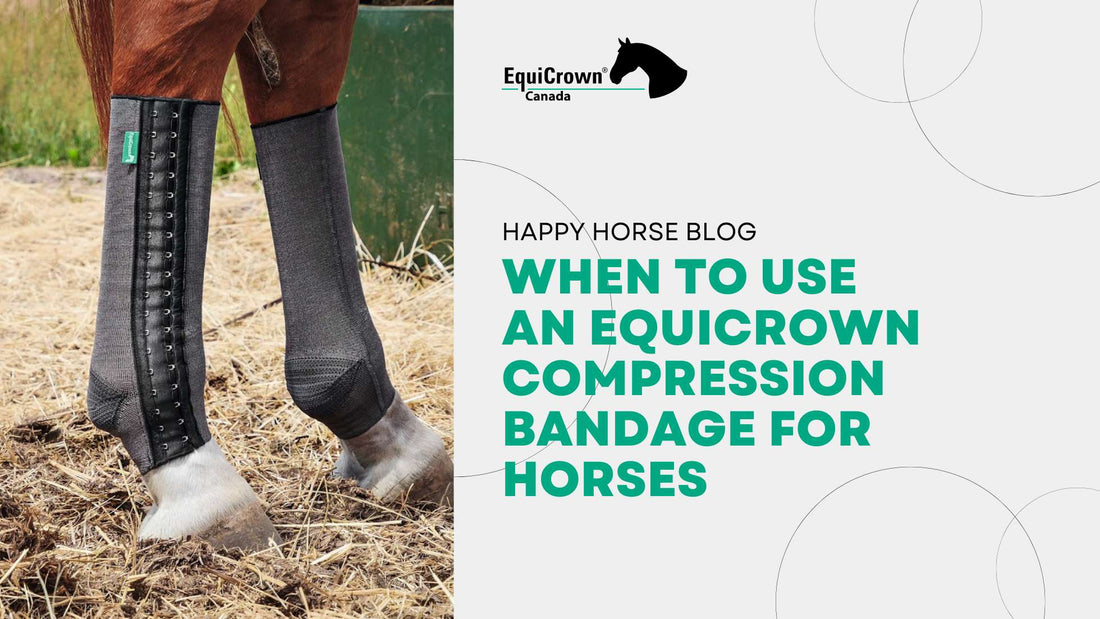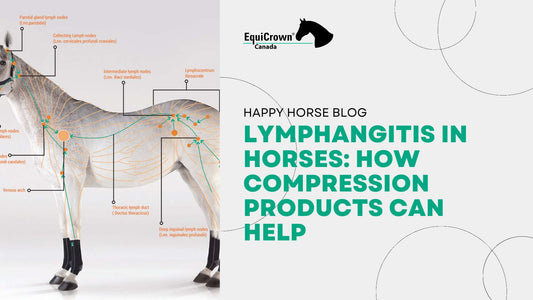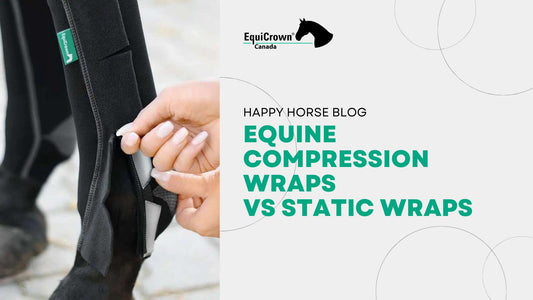
When To Use an EquiCrown Compression Bandage For Horses
We’ve prepared a guide with details about some of the most common conditions in which using an EquiCrown compression bandage is beneficial for your horse’s health. Read on to find out more about their recommendations to help you decide if they are suitable for your horse.
EquiCrown Compression bandages for horses have a wide variety of indications. They can help treat medical conditions, help prevent swelling, improve circulation, and boost performance.
Here are some of the most common indications for using EquiCrown bandages. Depending on the indication and severity, you should always discuss using the bandages with a veterinarian or therapist.
1. Support lymphatic flow and blood circulation
The correct function of the lymphatic system is vital to horses, their health, and well-being.
The EquiCrown compression bandages can be used as a prevention tool to help direct the accumulated lymphatic fluid from the horse’s leg. They can also be used to treat or improve lymphatic flow.
This way, lymph fluid and other harmful substances accumulated in the horse's leg are transported back up to the lymph nodes.

2. Treat swollen legs in horses.
Swollen or “stocked up” legs occur quite frequently in horses. Most of the time this happens with the hind legs, but in some cases, this can affect all four legs.
Edema or swollen legs can happen when fluid builds up in the horse’s leg and it can be caused by a variety of issues, from small ones, such as a cut or scratch to more serious afflictions, such as cellulitis or lymphangitis.
The EquiCrown compression bandage fits your horse’s leg like a second skin and can reduce the swelling.
3. Improve soft windgalls
Windgalls are soft synovial swellings located most of the time above and behind the fetlock joint. They can be caused by an irritation of the joint surface or capsule.
They can be improved by wearing an EquiCrown compression bandage.
4. Treat recent ganglions

A ganglion is a small cyst that doesn’t contain any synovial lining, and it’s one of the most common soft-tissue abnormalities. They are usually caused by day-to-day wear and tear on the tendon or joint.
If these ganglions are recent, they may be reduced or healed by wearing an EquiCrown bandage.
5. Improve post-operative or post-trauma swelling
Postoperative rehabilitation varies according to the severity of the damage and the type of surgical procedure involved.
EquiCrown compression bandages can protect joints from postoperative edema, and they can also provide support during the recovery and re-entry into activity.
6. Treat tendon disorders or injuries.
In horses, tendons of the limbs are vulnerable to accidents and trauma during exercise. Even fit horses can damage these structures in some cases, the severity of the injury may vary from minor to total tendon rupture.
In minor ruptures, using a compression bandage can help the rehabilitation of the damaged fibers.
7. For wound and scar treatment or “mud fever”
Often horses can get minor wounds or scratches that if left untreated, may become the gateway for bacteria to enter the leg.
Combining the EquiCrown bandages with a wound dressing can be beneficial in wound or scar treatment. The EquiCrown Fit Silver version is the most suitable since the material has an antibacterial effect. The bacteria found on the horse’s leg is reduced, giving the wound area the possibility to heal faster, without the risk of infection.
The bandages can be applied directly on superficial fresh wounds or by using a wound dressing between the leg and EquiCrown compression bandage.

8. Following exertion and overexertion
Like in human athletes, exertion and overexertion in horses happens when the intensity of training is maintained or increased beyond the fitness level. This can lead to fatigue or injury. It’s quite common among sport horses and should be addressed to ensure the horse can stay healthy and perform.
To minimize the risk of fatigue or injury, you can use the EquiCrown bandages to support the horse’s leg, reduce fatigue, and improve performance.
9. Protect your horse’s leg in long transports
If your horse needs more extended transportation, you have to take extra care to make sure your horse arrives safely at the destination.
Make sure that your horse gets acclimated to the compression bandages before applying them during transportation. If they are not used to wearing them, they can become a stress factor that adds to the stress already felt due to transportation.
Conclusion
As you can see, there are many indications where an EquiCrown bandage can help prevent or even improve symptoms for some conditions. If used correctly, they can be great tools to support your horse in reaching its best performance.
Get in touch with us if you have any other questions regarding our EquiCrown compression bandages, how they can be used, and what other indications they can be used for. Our team will be more than happy to answer all your questions.


